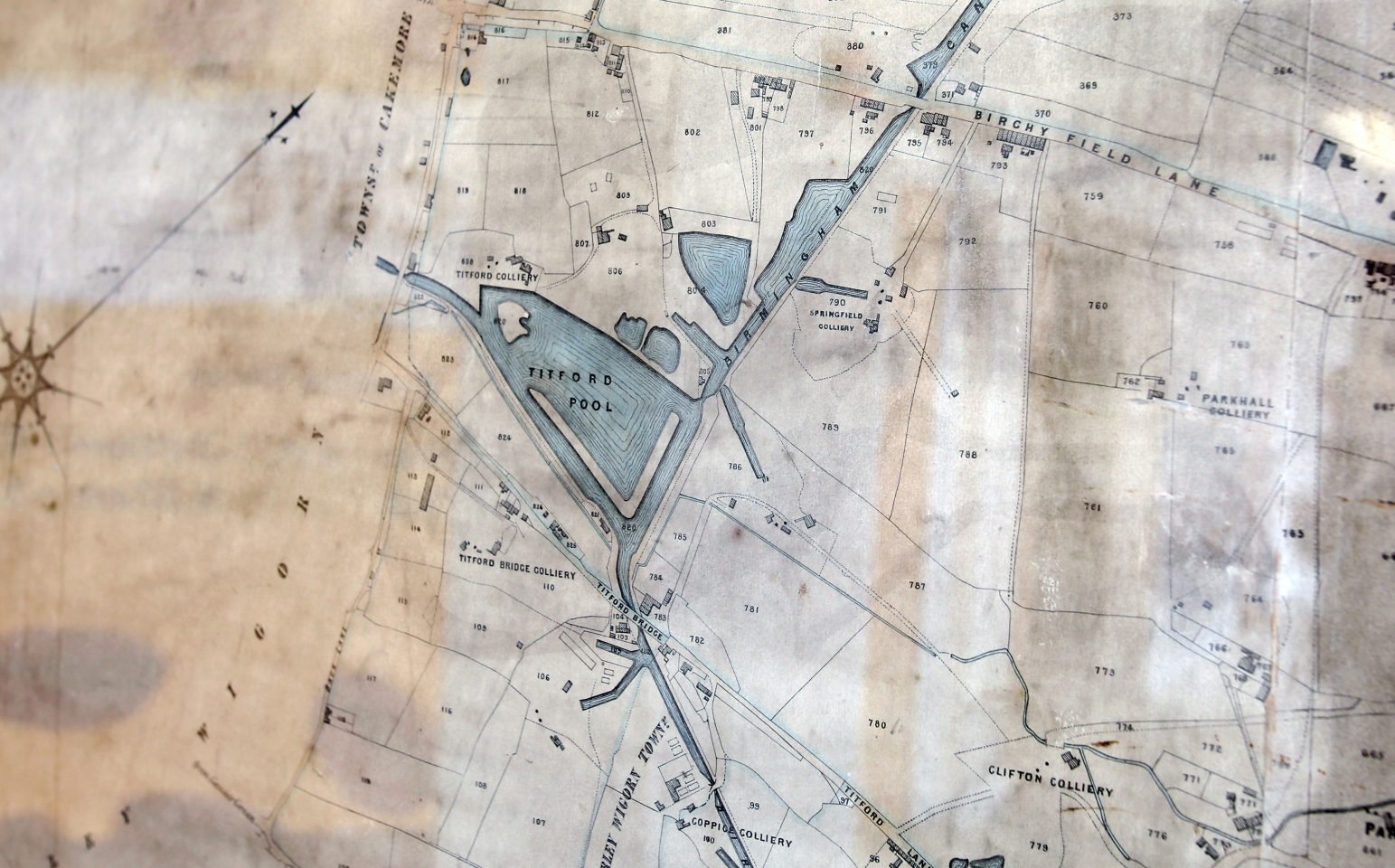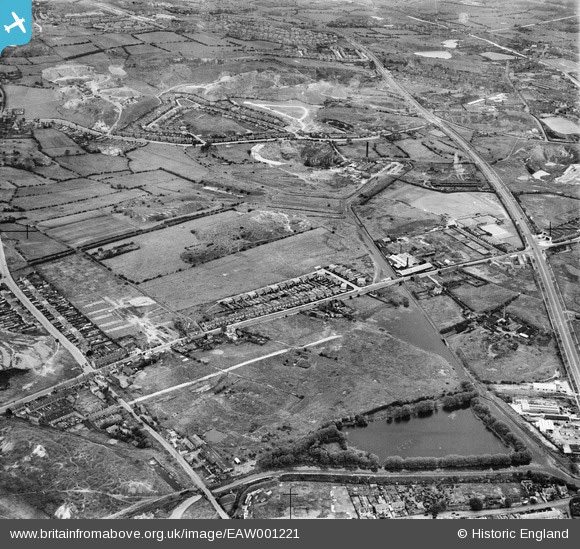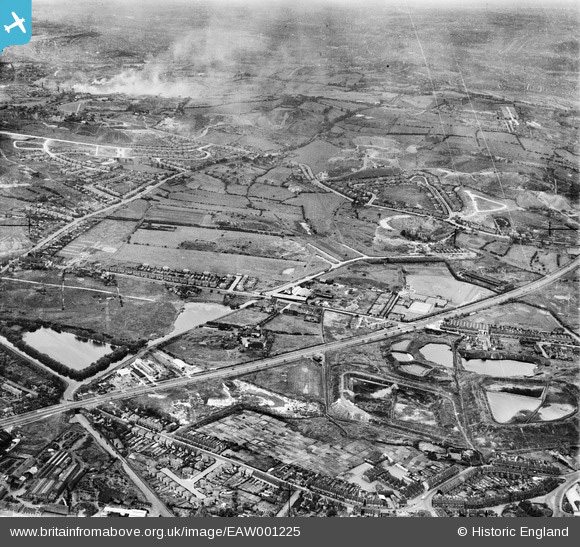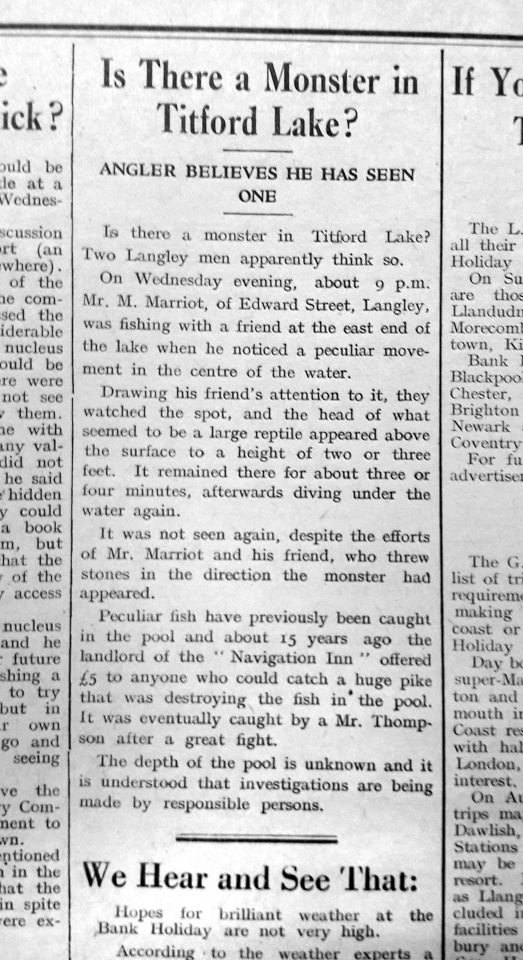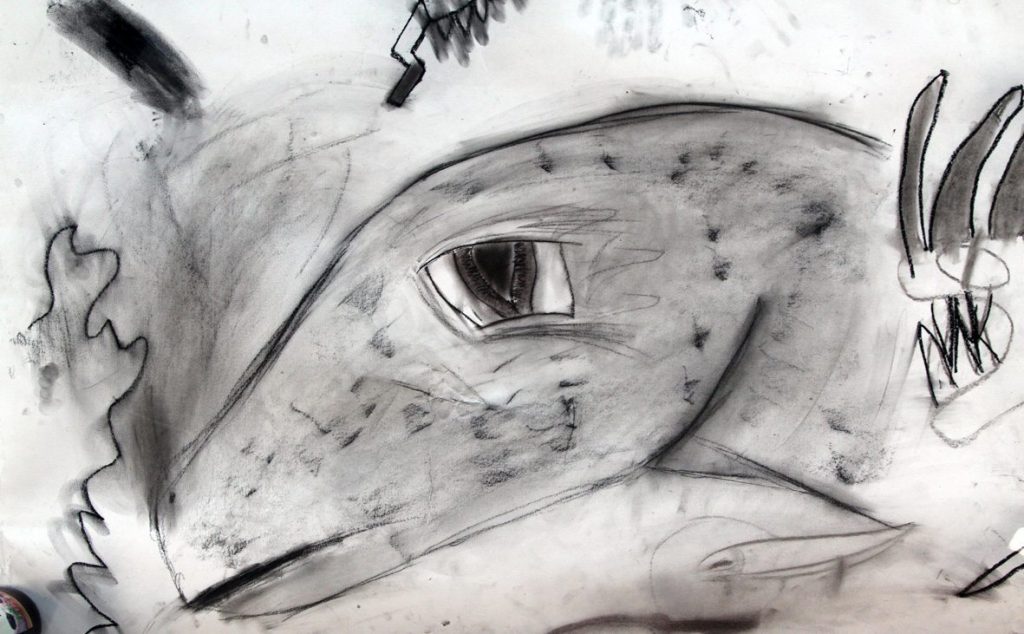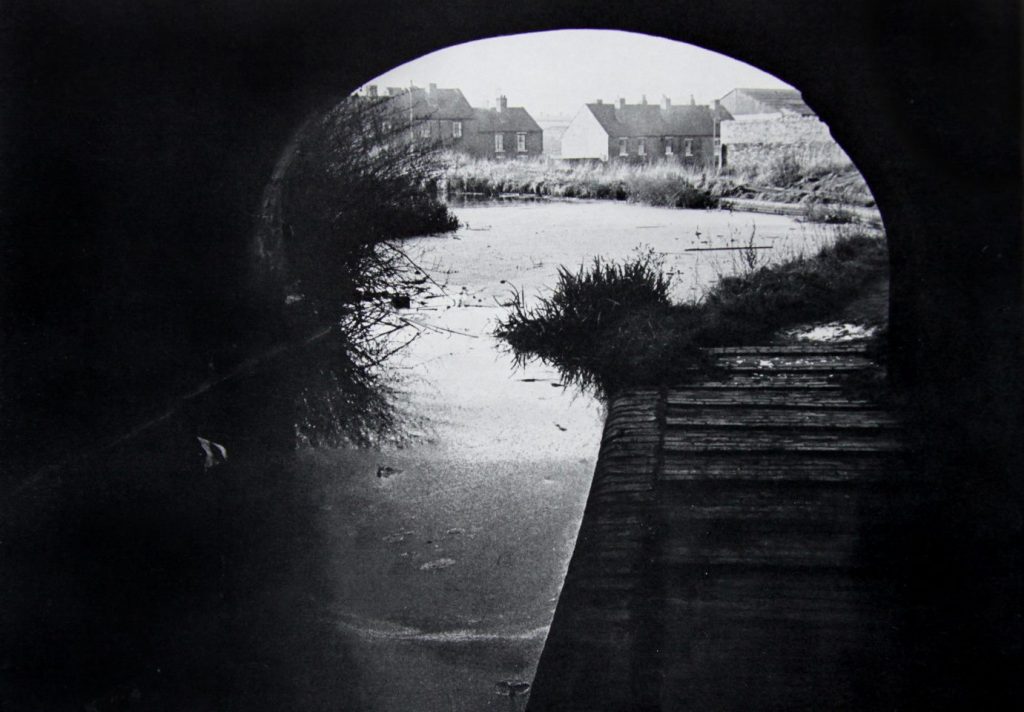The pools were constructed in 1773-4 by James Brindley, originally designed as a reservoir to help feed the Smethwick Summit Level of his Birmingham Canal (later called the Old Main Line). Rainfall from the Rowley Hills fed water into the pool, which then later was culverted to feed Rotten Park Reservoir. Today a haven for wildlife, the pools are partly covered by an elevated section of the M5 motorway.
Early in the 20th century this area was used as a recreation area by Comley & Sons of Titford Road. In 1911 they advertised as follows: ‘In addition to the facilities afforded to fishermen, this is now one of the prettiest spots in the Midlands, and is much visited by Pleasure Parties, School Treat etc. TERMS – Angling, 1s a day, 6d per half day (from 1pm); Pike, 2s per day, 1s per half day. Admission to the grounds, 2d, including Bowling Green 3d. Tickets to be obtained at the Pool only Refreshments supplied and Parties catered for on due notice being given.’
It fell into disuse during the First World War, but reopened in 1933 as Titford Pleasure Park, run by the Titford Lake Company. They restocked the pool with 10,000 fish, mainly roach and perch, with some trout. They built shelters, installed a refreshment buffet, bowling facilities, an 18-hole putting green and shooting range. Boats and punts were available to hire and motor boat trips organised. Langley Prize Band played at the Easter opening and Black Heath Town Prize Band on the Bank Holiday Monday. There were regular concerts and open-air boxing competitions, the Master of Ceremonies often being Jack Judge. A swimming display was given that September that year, attracting 2000 people. The pleasure park was popular up until the outbreak of the Second World War, when it closed down after a drowning.
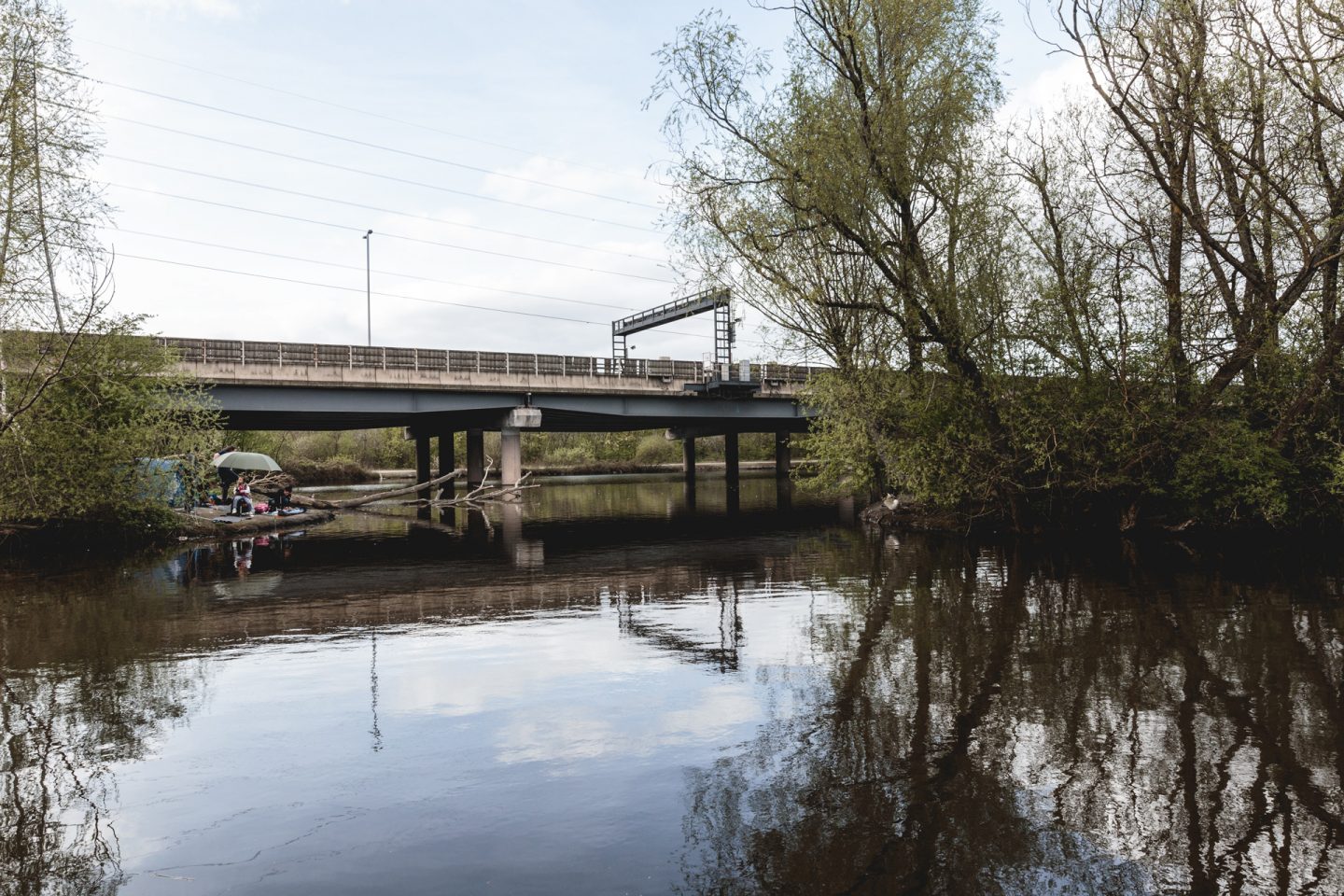
It had previously been the site of another tragedy in 1889, a story researched by Chris Cooper in local newspapers, when 21 year Joseph Harvey, a horse driver living in Titford Road, and 20 year old Lizzie Bates of Eel Street, Oldbury, committed suicide by drowning themselves in the pool. In July at the inquest held at the Brickmakers Arms, Church Bridge, Lizzie’s sister Hannah explained that the pair had visited Stourbridge on the Sunday and returned that night, and she had left them both downstairs in the family house. The next morning Lizzie was missing and her father found the note on a chest of drawers.
The note was read out: ‘Dear Father, you must not grieve over me, for I have done this with Joe, because he could not have me in life, so I thought he should have me in death. He said that he should never see me again in life when he left me, so I thought I would go with him; and, Father, when you find us, please bury us as close together as you can. Give my love to all my friends, and tell what has caused it, through having a miserable life at home, and for the one I love. So good night, and God bless you all. Be kind to the children.’
A second note, addressed to Joseph Harvey’s father, was also read out. ‘July 21st, 1889. Dear Father, I leave you forever on earth, so now you will see what has been done by trying to keep me from Lizzie, the only one I could love, and I hope you will learn a lesson from this, and when you find my body you will find a glass pipe in my jacket pocket. Please give it to William James, my fellow workmate; and I wish to be buried me and Lizzie together, and I wish for my brother James to have all that belongs to me. You will find some money in the box upstairs – give it to Jim; and the pair of braces that Lizzie made me, give them to Joseph Stanfield. So I give you my best love, father and brothers, and all enquiring friends.’

Hannah thought that the letter addressed to the father of Joseph Harvey was in the hand of Lizzie, and the letter to the father of Lizzie Bates was in the hand of Joseph.
It was reported that the couple had been courting for about three years but Joe’s father objected to the match. The father denied that he had interfered in any way to prevent his son marrying Lizzie, and said that he had only told him to look for somebody who could do him good.
Two hats had been found by the waterside by one Enoch Handley. After the pool had been dragged for three hours by PC Bayliss and his team, the bodies of Lizzie and Joe were found tied together. It was reported that they had wrapped string around each other 30 times, and Joe’s wrists were also tied together; his watch had stopped at 2.20am.
The inquest finally declared that the couple were in a sound state of mind when they wrote the letters but that they were temporarily insane when they got themselves into the water.
One of the more curious local stories is that of the Titford Monster, reported in the Warley Weekly News and uncovered by Martin Prestidge in the archives. ‘I found a lovely story the other day. In 1938 as a stunt for the Oldbury Carnival it was put about that a Monster had been seen in Titford Pool. And that the scientist investigating the Loch Ness Monster was to fly to Wolverhampton from Inverness and travel by train in a bid to capture the Monster and transport it to Scotland. In the meantime a donation to the Carnival Funds would procure a chance to capture the Monster before the Professor arrived! It is not recorded whether the attempt was successful!’
The pools were used for British Waterways canal boat rallies in the 1980’s. Carp, bream and perch are still found here by local fishermen, along with wild geese, mallard and coot. One boatman, Captain Ahab, recorded on his blog: ‘Whilst both pools look tempting to boaters that make it this far, don't stray into them. They are horribly shallow and choked with soft mud which has ensnared many boaters over the years. The mud appears to be bottomless and can swallow a whole boat pole, denying those stuck the usual means of escape. That said, there is a certain windswept beauty anout the place, popular with ducks and fishermen, leading on the the delights of the abandoned Portway and Causeway Green arms. On the day of my visit I was surprised by the beauty of the southern pool, where the reflections of the sky made even the M5 appear an object of beauty.’

